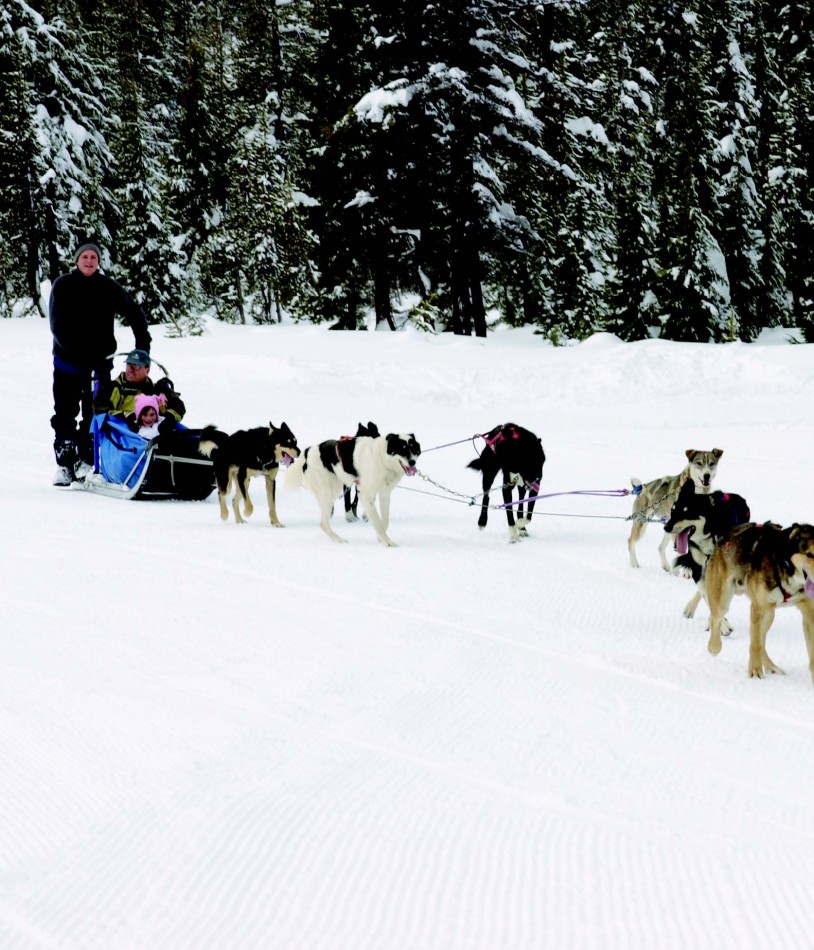written by Lynne Sampson Curry
Don’t confuse “green” with “lame” when it comes to your next outing. Here are some of our favorite ideas to help you plan an adventurous trip that treads lightly on Mother Earth.
Looking to lighten your (carbon) load on your next vacation? Environmentally friendly travel is within arm’s reach throughout our state, from train trips to bike routes to horse packing. We handpicked seven low-impact getaway ideas— for families, friends and couples—that minimize your carbon footprint while maximizing adventure and seasonal fun. Paddle the new-and-improved Willamette Water Trail, harvest cherries in Hood River on a farm stay or hop on a biodiesel bus for a sustainable wine tour. Many begin close to home, a basic principle of earth- and budget-friendly travel. Whether it’s a day trip or a multiday outing on your wish list, these eco-excursions will inspire you to make all your summer travel truly green.
Train Travel the Cascade Line
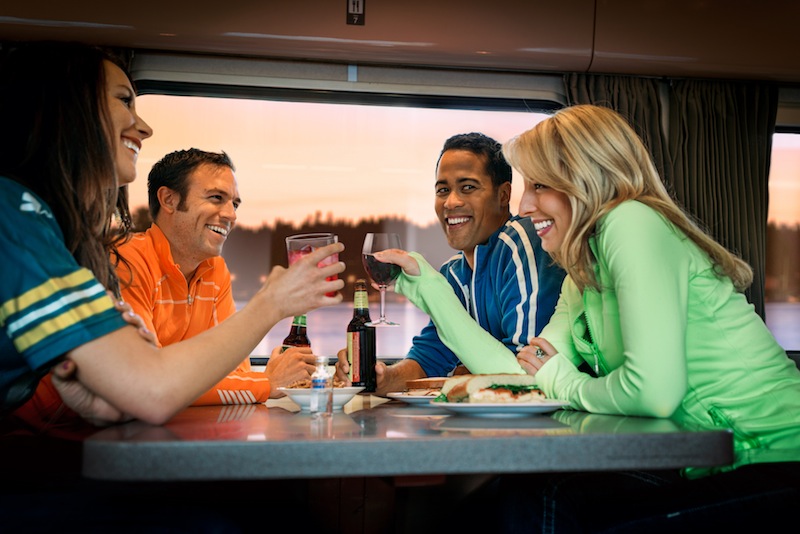
Skip the freeway or airport, and see the Cascade corridor in a new light as you gather carbon credits aboard Amtrak’s Cascades scenic train. The kids will celebrate their liberation from car seats with forays to the bistro car, while you relish hands-free scenes of the region’s panoramic volcanoes, farmlands and waterfronts. Created as an experiment in 1984 between Portland and Seattle, the full 466-mile route now connects Eugene with Vancouver, British Columbia. Take the entire trip that lasts roughly eleven hours and costs about $80 oneway for adults, and breeze across the border. Don’t forget to bring your passport.
Upon arrival, grab the sky train to downtown Vancouver. You can also choose any segment in between, where you can step off the train right into downtown, such as Seattle’s International District and nearby Elliott Bay waterfront, or Bellingham’s funky Fairhaven district. Better yet, reserve one of the bike racks, so you can two-wheel to new places on the Puget Sound or Eugene’s famed bike paths. No matter your terminus, the Cascades train is a main attraction where you can settle into a plush leather seat with actual legroom, access wi-fi or tune into the natural surroundings. High points include the Columbia River crossing, Nisqually National Wildlife Refuge north of Olympia and uninterrupted views of the Olympic Mountains between Seattle and Edmonds, to name a few. There are no seat assignments, so be sure to arrive in time to score seats on the water-view side. As for food and drink, the bistro car sells a diverse and regionally sourced range of options—a roasted veggie tray with pesto dip and kale salad, for example— plus respectable beer, wine and cocktails. Amtrak allows voyagers to bring their own food and non-alcoholic drinks, too.
The Coast Starlight is Amtrak’s daily Seattle-Los Angeles route and the low-stress, retro way to reach southerly destinations. Within twenty minutes of boarding in Klamath Falls you’ve crossed into California, sneaking shots of Mt. Shasta and the precipitous slopes of the Sacramento River Canyon. From Sacramento, the terminus of the first transcontinental railroad in 1869, the tracks veer to the coast from San Francisco’s East Bay (stops in Emeryville and Oakland), traversing the historic mission route through central coast farmlands. The dramatic vistas along the 104-mile stretch of Southern California coast, which bring you near enough to the beach to spot surfers, are this rail line’s claim to fame. Sleeping cars, an onboard movie theater and arcade fill any downtime between the sights of Santa Barbara and Los Angeles’ Art Deco Union Station.
Yurting in Southern Oregon
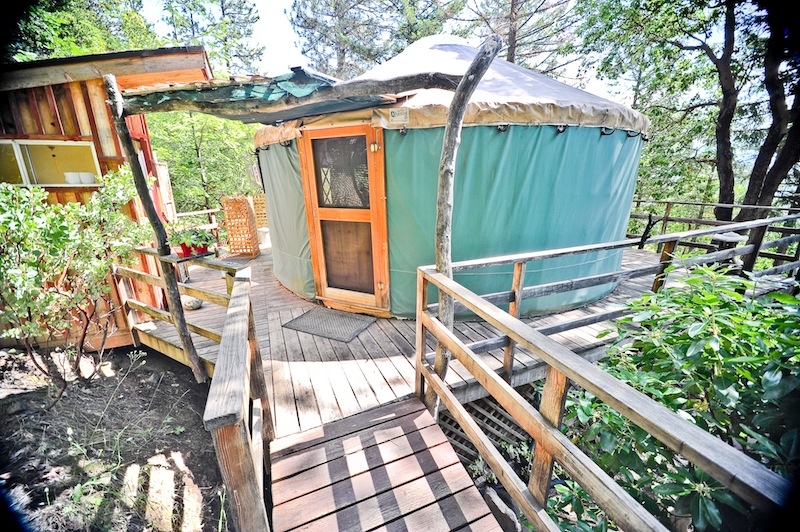
You probably know all about the popular coastal yurt systems that book up before the summer solstice. What about yurting along the Rogue River? Located at the crossroads to the Oregon Caves National Monument and Crater Lake National Park, Valley of the Rogue State Park rents six yurts that each sleep five at the same low rates as those on the coast ($36 per night). Rustic yet comfortable, these ecological dwellings feature electricity, heat and giant skylights for star gazing. One of the yurts accepts pets for an additional $10 per night. The outdoor fire pit and picnic table, walking trail and showers complete the amenities that are a pampered upgrade from tent camping. There’s a boat ramp and bike trail here, but this location is less ideal for recreation than its access to I-5 for cultural excursions, including nearby historic Jacksonville (jacksonvilleoregon.org) and Ashland’s theater season (osfashland.org). If glamping is more your style, book your stay at the privately owned yurt Lotatrees with a real queen-sized bed, artful living area, full kitchen and private shower ($85 for two guests) on a deck. It comes complete with your own screened gazebo — secluded within the conifers just fifteen minutes from happening Ashland.
lotatrees.com
Bio-Wine Tour in the Willamette Valley
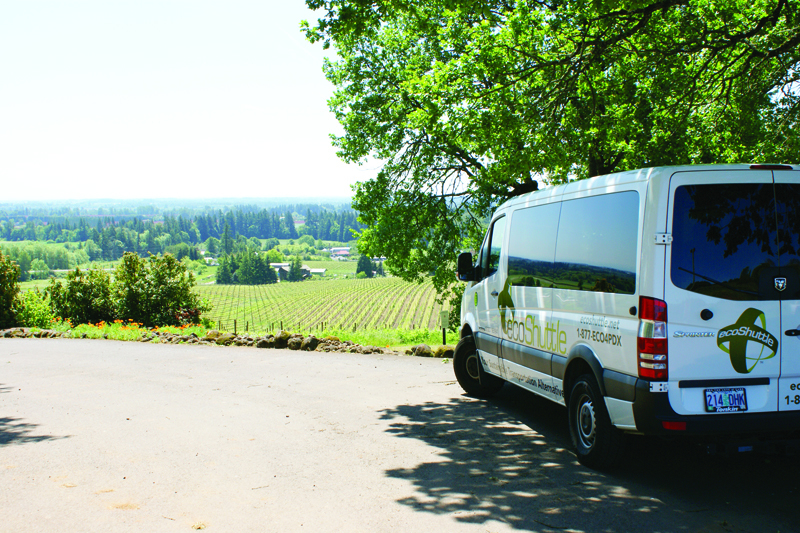
Craft your own wine tour to sustainable wineries aboard a biodiesel bus. EcoShuttle earned the “Sustainability at Work” certification’s silver level by using only top blend biodiesel from waste vegetable oil, which has the lowest emissions. It’s no surprise this tour company’s favorite wineries use the most energy-efficient, waste-saving growing practices, grape sourcing and tasting room operations. Many of these vineyards participate in the Carbon Neutral Challenge, a third-party certified program that monitors greenhouse gas emissions with the goal of net zero carbon emissions. Ecoshuttle specializes in custom tours, originating anywhere from Salem to Portland. In a leisurely day (prices start at $475 per group), sample Sokol Blosser’s Dundee Hills Pinot, eat in or take-out at Harvest Fresh and continue on to the estate vineyards of Stoller Vineyards and Rex Hill, where stunning views compliment the notable viticultures. A weekend trip ($1,150) allows more leeway to sample varietals in both north and south Willamette wineries, coupled with a stay at the Allison Hotel & Spa (see sidebar, p. 74). EcoShuttle accommodates as few as four people and up to thirty-two for a group getaway, reunion or celebration. Go green while tasting your sustainable reds and whites.
Farmstay in Hood River

Live the dream on an organic farm and orchard in the Mt. Hood foothills. At Sakura Ridge, a working organic farm with 3,000 pear trees, a flock of sheep, laying hens and beehives, you can do as much or as little work as you want during your stay. Hosts Deanna and John Joyer invite you to work their seventy-two acres of forest, orchards, pasture and commercial garden. Herd fifty sheep, collect the morning eggs, tend to the bees. In summer, there are cherries galore to harvest, followed by peaches in August—all organic. There’s peace and quiet on the porch in full view of Mt. Hood’s summit. The farm’s homegrown breakfasts are fantastic. For a midday meal, grab a bottle of local wine, a blanket and food prepared in your kitchenette for an idyllic orchard picnic. The log lodge is modern, lightfilled and outfitted with a fireplace, private baths and a kitchenette (rooms start at $185).
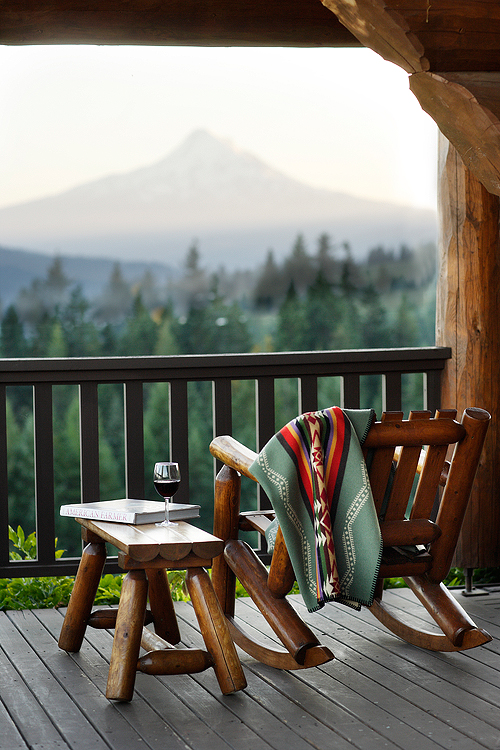
Draper Girls Country Farm is a similar working farm B&B not far from Hood River that has an an on-site u-pick operation. Or, move into one of the wall tents set up within an orchard and vineyard at Bella Vista. Find farm stays throughout Oregon (farmstayus.com), and feel good about contributing to sustainable agriculture. Sakura Ridge
bellavistahoodriver.com
Road Biking from Your Home
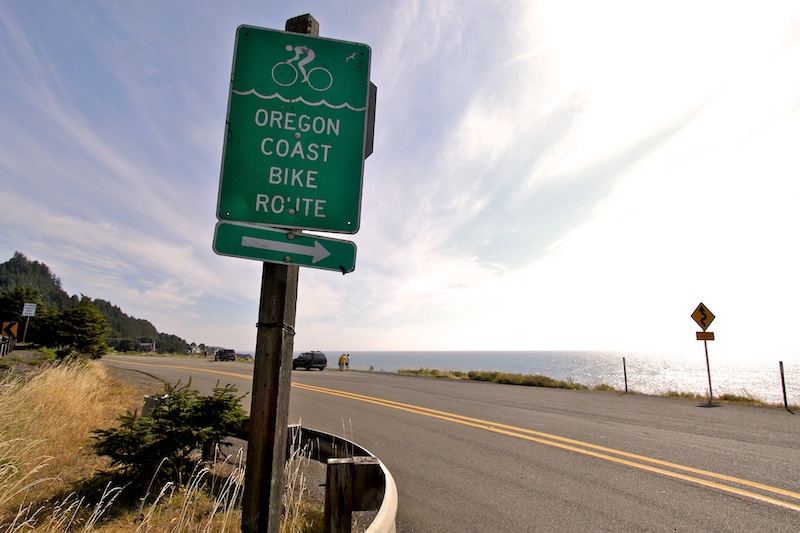
Do you dream of taking an epic bike tour, whatever your skill level? Try this fossil-fuel-free idea: Take a pencil and protractor and a map of your hometown, place the point on the location of your house and the pencil at an angle thirty miles away and trace the circle. Be sure to account for terrain difficulty. If that’s too retro, use Google Earth. Either way, scan the area for a satisfying destination—a park, river, lake or other natural feature—or even a restaurant, brewpub or winery. Then plot a route with the lightest traffic volumes (Sunday is best), the least elevation gain, the widest shoulder and the smoothest pavement for a pleasing day-long tour. If that’s too DIY, check out the searchable ride database at rideoregonride.com. Enter your location and preferred level of difficulty for a tested listing of road and trail routes with detailed maps and descriptions. If you’re looking to pedal farther afield, somewhere not too far from home, you’ll find one of the nine designated Oregon Scenic Bikeways. Encompassing more than 700 miles of the state’s roadways, these official bike routes guide you to single- and multiday options, such as Sisters to Smith Rock, the Metolius River Loop and the 135-mile Willamette Valley Scenic Bikeway. There are new routes approved periodically based on road conditions, traffic volumes and amenities—all outfitted with signage to keep you safely in the saddle.
oregon.gov/odot/hwy/scenicbyways
Paddling the Willamette Water Trail
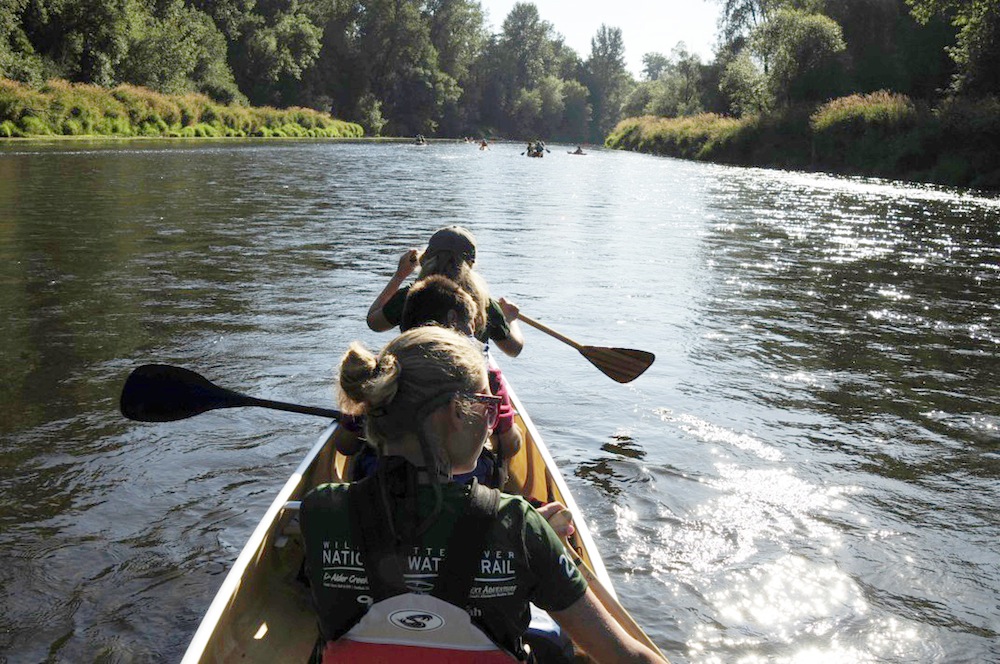
Paddle from your back door, and behold the natural beauty and recent conservation efforts along the Willamette River. A 187- mile stretch of the valley’s floodplain river is a newly designated water trail, an official status from the National Water Trail System garnered through a partnership between Willamette Riverkeeper and Oregon Parks and Recreation. The Willamette Water Trail is now more user-friendly for all levels of flat-water paddlers thanks to signage that indicates put-ins, take-outs and campsites—plus there’s a river ranger on patrol. Use the free online maps to plan your trip.
Flowing north, the section from Eugene to Corvallis is faster with multiple channels, while the upper stretch past Salem is wider and shallower, best if you’re a beginner. If you have a basic level of boating safety instruction, Riverkeeper Travis Williams suggests jumping into your canoe or kayak from downtown Salem’s Wallace Marine Park to Wheatland Bar (an island, actually), where there is a broad gravel bar for a picnic, and take out at San Salvador Beach, twenty-eight miles downriver. For an overnight trip, paddle to Five Island and take out at Rogers Landing in Newberg. Non-technical and relatively free of hazards, such as strainers (branches trailing into the river where you can get trapped) and side channels, this outing is easy for shuttling a car or arranging a ride. Expect primitive campsites (fire rings, portable potties, leave no trace ethics) at all but Champoeg State Park. Find your canoe, kayak and gear rentals and instruction at major points along the water trail: in Eugene, Whitewater Designs; in Corvallis, Peak Sports; in Portland, Aldercreek Canoe & Kayak and Portland River Company.
Pack Trips into the Wallowas
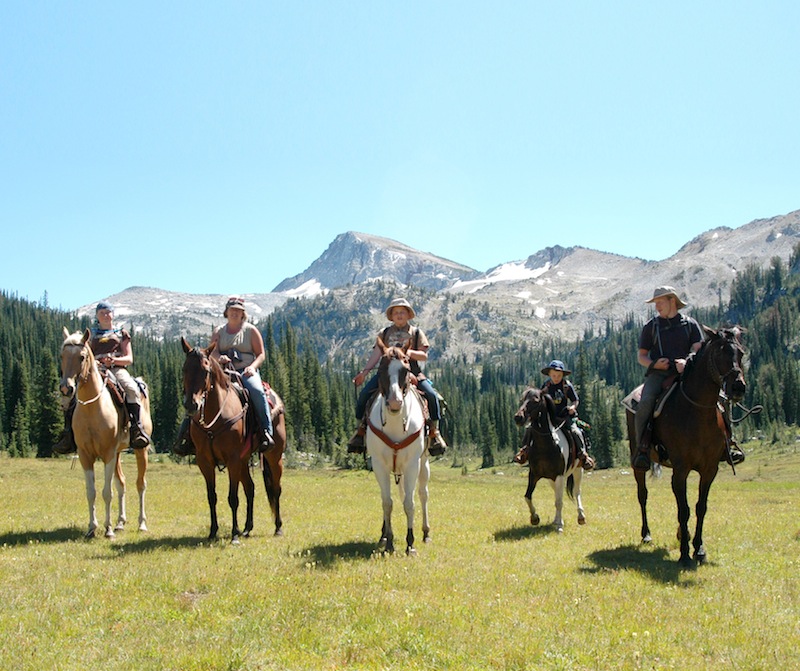
Horses are like wilderness taxis. With their support, non-backpackers, the young and the old can experience the rugged backcountry in places such as Eastern Oregon. Even for avid hikers, for whom humping an overnight pack may be beyond their means, a horse can make reaching a lofty elevation manageable. Del Sol Wilderness Adventures, a packing outfit run by veteran horseman Barry Cox, offers options for everyone: the “deluxe camp” and the “drop camp.” Ideal for families and mixed-ability groups, the deluxe camp is the full-meal deal. Walk or ride into camp, where your tents are set up and the camp tender has the Dutch ovens fired—a meal of baked stuffed chicken, wild rice and zucchini casserole, and biscuits to be served with local honey inside—while you hike, fish or dip your feet in an alpine lake. You get access to the horses for trail rides in the high country and a posse of the most experienced hands around. (A deluxe camp is $225 per person per day.) Del Sol’s most popular option is the drop camp. The pack string does the heavy lifting while you reserve your energy for summiting the Matterhorn. You can hike the trail or ride it. With each horse hauling 120 pounds, there’s no need to sacrifice any luxury you crave, from microbrews to grass-fed steaks. (Drop camp is $500, which includes two horses, one way.) The Lakes Basin is flanked by Eagle Cap. At 9,572 feet, this is the most popular local summer destination.



